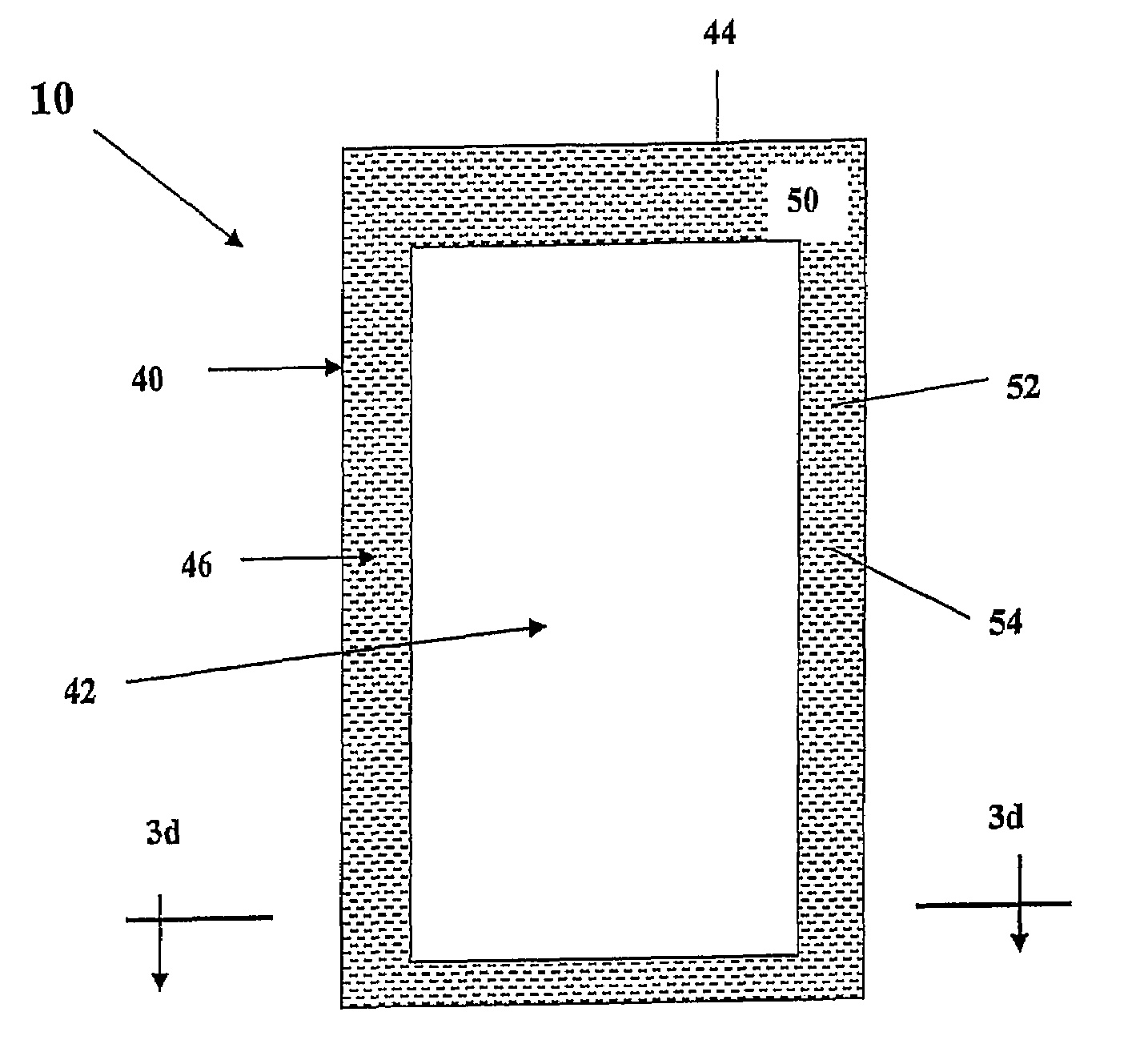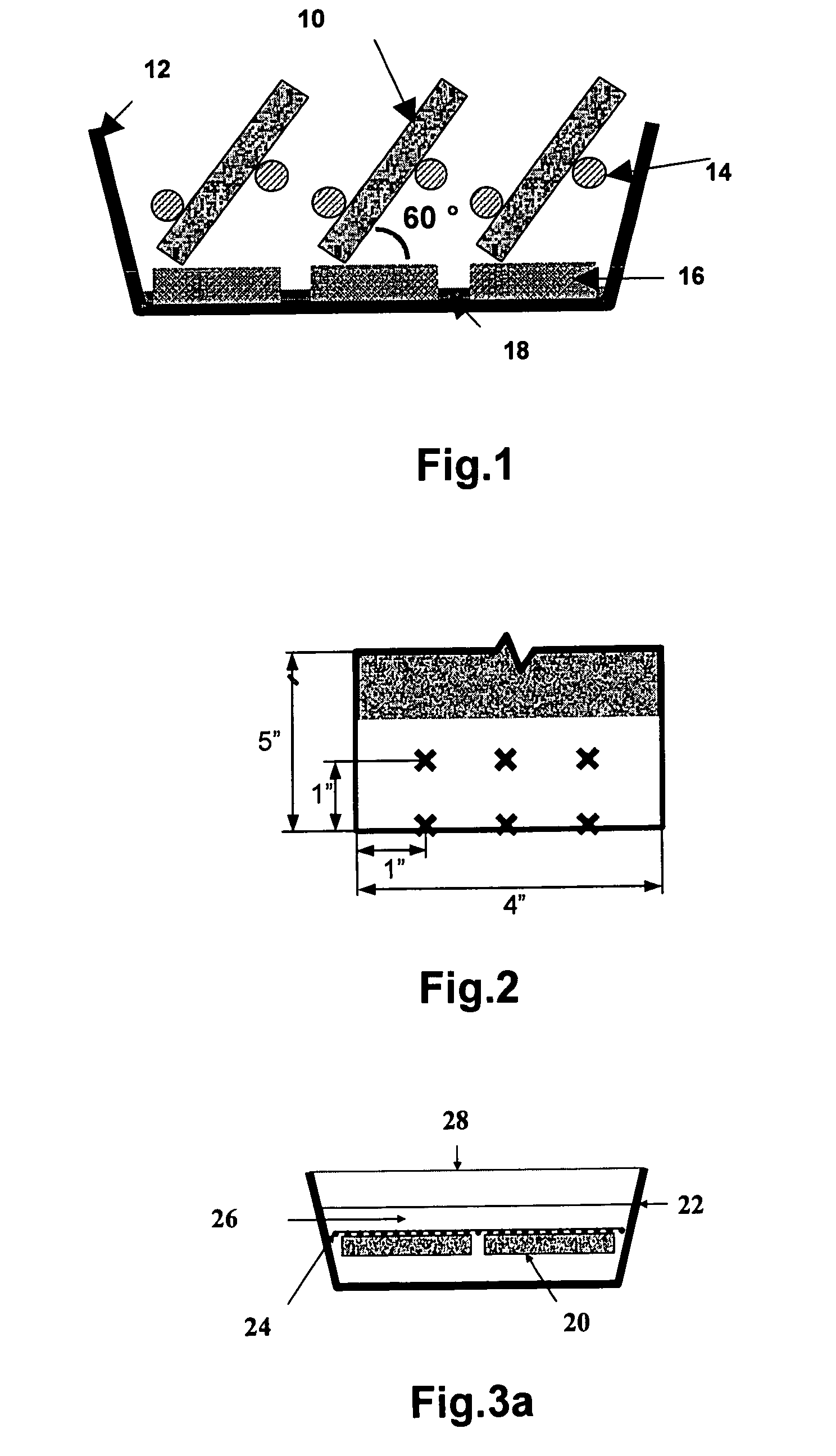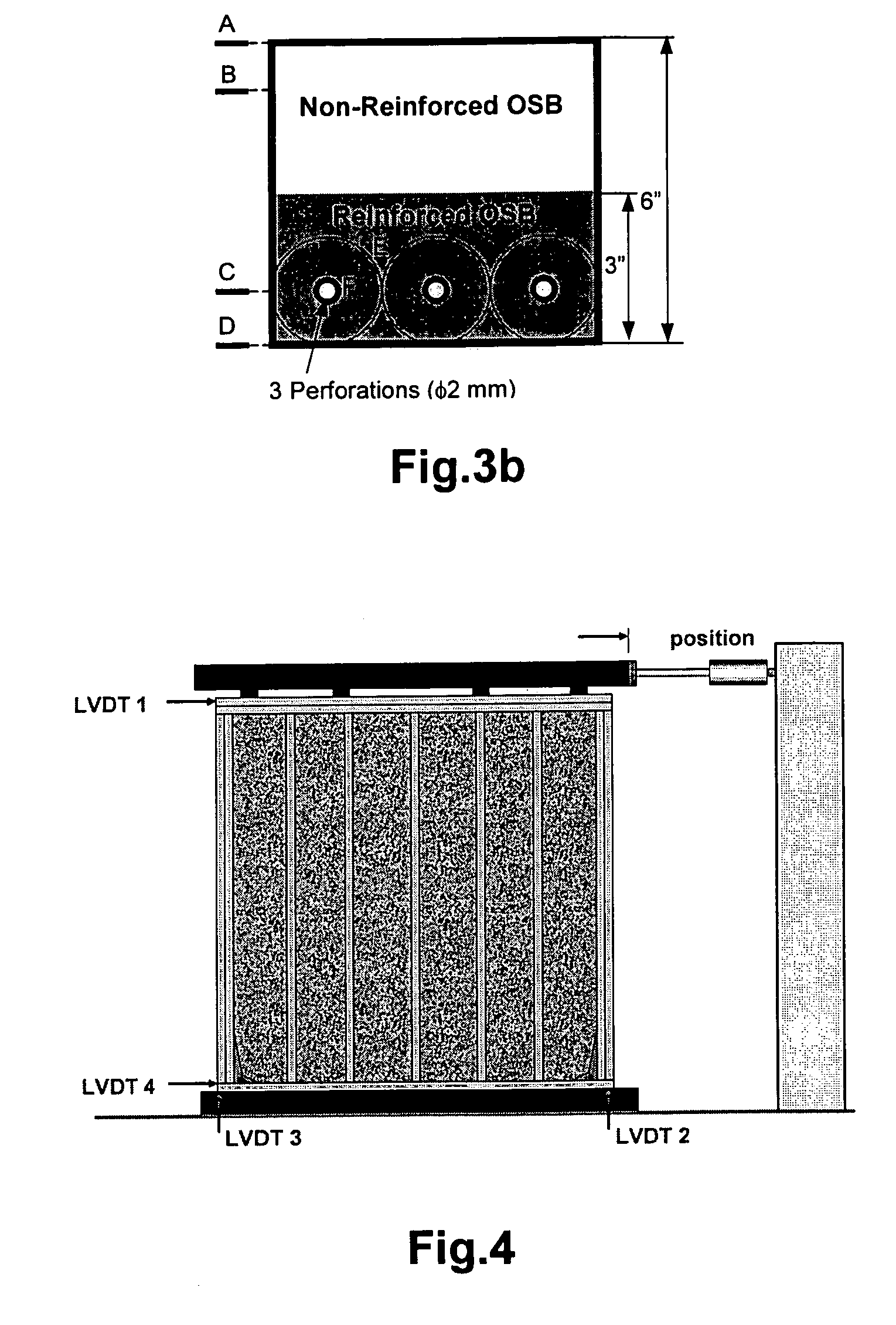Multifunctional reinforcement system for wood composite panels
a multi-functional, wood-based technology, applied in the direction of cellulosic plastic layered products, synthetic resin layered products, transportation and packaging, etc., can solve the problems of high vulnerability to thickness swelling and water absorption, economic losses in the united states due to natural disasters, and certain osb, so as to improve connector performance, strength and energy absorption, and strengthen the shear wall or diaphragm
- Summary
- Abstract
- Description
- Claims
- Application Information
AI Technical Summary
Benefits of technology
Problems solved by technology
Method used
Image
Examples
examples
[0069]Materials tested were polyester (PE), vinyl ester (VE), polyurethane (PU), melamine (ME), oil-based coating (tung oil), water-based coating (waterseal), and hydroxymethylated resorcinol (HMR). After the initial screening tests, the following materials were selected for edge coating: PE, VE, PU, ME and tung oil. The PE, VE and ME were mixed with catalyst as prescribed by the supplier, as shown in Table 1, and applied to OSB in a single layer by brushing.
[0070]
TABLE 1Wood composites and synthetic materials used in the projectWood-based Composite: Regular OSB panelsResinCatalyst / Percent usedPolyester (PE)Methyl Ethyl Ketone Peroxide / 2%Vinyl Ester (VE)Butanone Peroxide (32% sol) / 2%Polyurethane (PU)Ready-to-UseMelamine (ME)Aluminum Chloride (28% sol) / 3%Tung OilReady-to-UseReinforcements (used with PE / VE resins)Light Woven Glass Fabric (E-Glass)Light Woven Aramid Fabric½″ (Chopped E-Glass Fiber) 1 / 32″ (Milled E-Glass Powder)
[0071]Tung oil was applied to the OSB edge by 15 mm immersi...
PUM
| Property | Measurement | Unit |
|---|---|---|
| RH | aaaaa | aaaaa |
| thickness | aaaaa | aaaaa |
| constant temperature | aaaaa | aaaaa |
Abstract
Description
Claims
Application Information
 Login to View More
Login to View More - R&D
- Intellectual Property
- Life Sciences
- Materials
- Tech Scout
- Unparalleled Data Quality
- Higher Quality Content
- 60% Fewer Hallucinations
Browse by: Latest US Patents, China's latest patents, Technical Efficacy Thesaurus, Application Domain, Technology Topic, Popular Technical Reports.
© 2025 PatSnap. All rights reserved.Legal|Privacy policy|Modern Slavery Act Transparency Statement|Sitemap|About US| Contact US: help@patsnap.com



